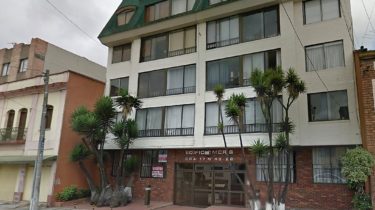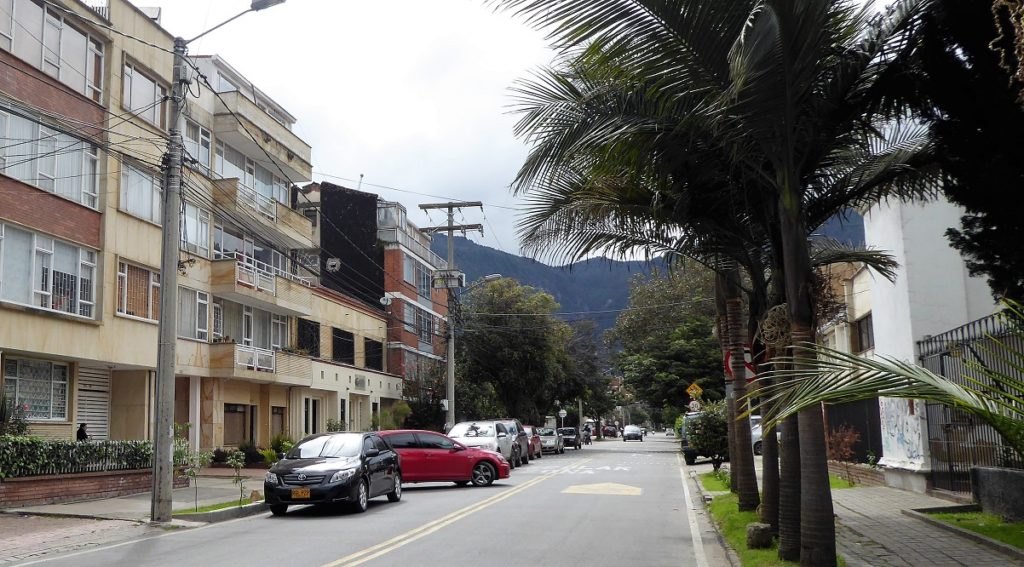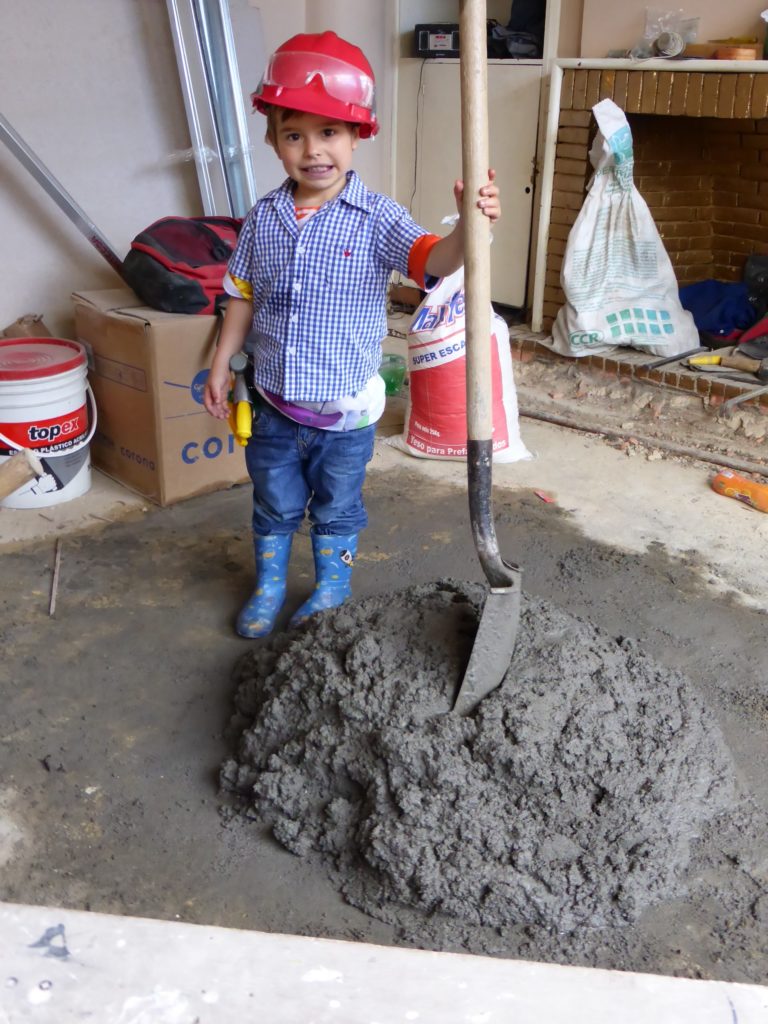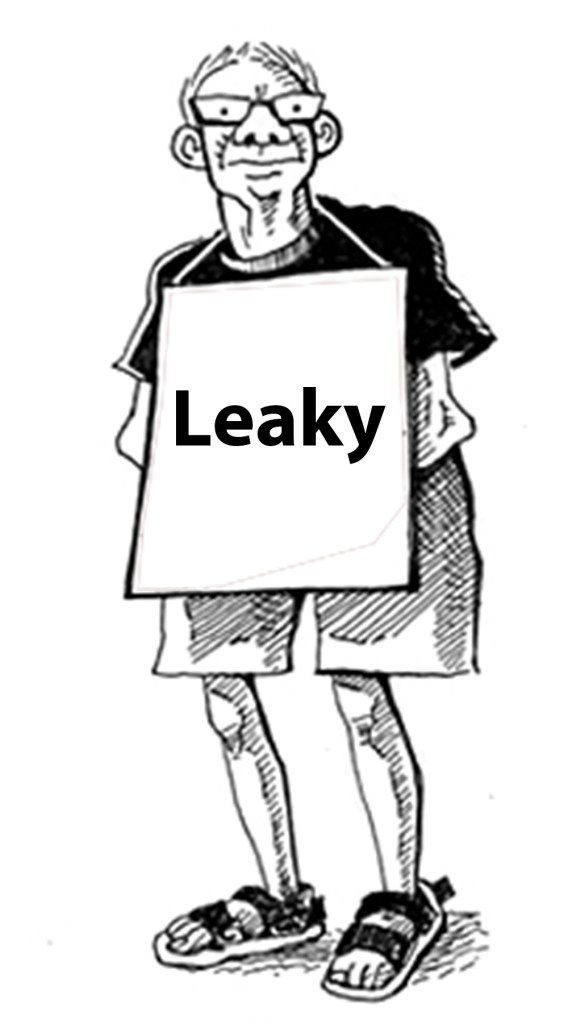Building battles

This story first appeared in my Going Local column in the Bogotá Post in 2018
You don’t need to go further than your own front door to find conflict in Colombia, as I find out after a stint managing the block of flats where I live.

March is the month when Bogotá’s blocks of flats hold their annual residents’ meetings, the dreaded asambleas that regulate daily life in an immense variety of buildings from the intricate red-brick high-risers of Rosales (with Manhattan prices) to stark Soviet-style khruschyovkas lined up like dominos on the city’s southwest plains.
Sensibly, most of us try to avoid these bureaucratic burdens in our lives. But stay here long enough and you will be drawn in to the minutiae of the rules governing communal living, the Reglamento de Propiedad Horizontal.
The first conundrum – and hint of confusions ahead – is how ‘horizontal’ relates to vertical real-estate. But don’t expect common sense, or even simple humanity, to count for much at these marathon bunfights which conjoin disgruntled residents, busy-bodies and small-time dictators who crave power over their neighbours lives and lifestyles.
‘We must remove the scourge of marijuana from our building,’ thunders a red-faced man at one assembly I attend. He claims to ‘represent the Fiscalia’ and has a ‘hotline to the CTI’ (think: crime investigation unit). We all know he really works in a bank.
Smell of pot
True, there is smell of pot from under the door of Flat 403, but as a younger woman meekly points out: ‘everyone has the right to smoke their personal dose’. The older residents erupt in indignation, oblivious to the inconvenience of their pets that pee on every nearby lamppost and whose plastic-wrapped excrement snags in the rubbish chute.

And even as we discuss the tenants in 403, the lift door suddenly opens by our side (the meeting is held on plastic chairs in the building foyer) and out step four rockeros dressed in black jeans and hoodies carried along in a waft of la blasta. ‘Buenos noches,’ they say politely and we all reply the same.
So, to the next item of the agenda.
This is on the building CCTV security cameras. ‘Why not put a live feed on the Internet?’, proposes one flat owner, presumably so he can sit on a beach in Aruba while watching over Flat 403 on his cell-phone. Someone else points out this is a bad idea since criminal gangs hack the footage to plan a robbery. This leads to a ding-dong on how-safe-is-the-Internet, an argument in which no-one is an expert, but everyone has an opinion. Meanwhile a 10-second search on Google takes me to a real-time till camera at a gas station in Pittsburgh. I mention this to the Asamblea. Do we really want the inner workings of our building broadcast worldwide?
This angers the pro-Internet block who diss me with some technical claptrap about 4th generation password protocols. This riferrafe ends swiftly in my favour when the same protagonists suggest linking our cameras to the local police station, a plan that causes outrage even among the wrinkly residents. If one thing unites Colombians of all ages, it’s not trusting the tombos.
Common sense is often uncommon

Common sense is also lacking on issues such as bicycles and pets. In Colombia animals seem to have more rights than humans, often pitting older pet-owning residents against the younger generation who meanwhile reserve their right to practice arpeggios with full fuzz pedal on their electric guitars.
Somewhere on this generational gradient lies the bicycle, an object of hate for the Estrato Cuatro climbers whose very success is embodied in their car and a garage to park it in. These types will go to any length to thwart some slacker trying to squeeze his bike beside their Renault Duster, at times even banning neighbours putting their own bikes in their own legal parking spaces. This despite Colombia’s Transport Code clearly defining a bicycle as a ‘vehicle’, and a parking bay as a ‘place to keep vehicles’.
Such pettifogging underlines the city’s schizo bike mentality. On the one hand it touts its lauded Ciclovia, but in many fascist pockets of real estate the eco-friendly residents are forced to drag los bicis up many flights of stairs to their own flat or even haul them up with ropes to the balcony.
I guess it also shows that many conjuntos – particularly in the up-market side of town – consider themselves above the law and make their own rules backed by fines and sanctions to keep their residents in line.
These problems are fed by Colombia’s often contradictory laws or impractical regulations. For example, most balconies are designated as ‘communal areas with exclusive use’ meaning the building – and all its co-owners – own the balcony, but since you can only get to it through your flat, you have ‘exclusive use’. Effectively, it’s yours. Legally, it’s not.
This sparks all sorts of problems as owners improve their balconies by installing a small roof to keep the rain off. These semi-improvised structures rarely affect the integrity of the building but do shake the foundations of neighbourly solidarity and cause bitter in-fighting and jealously over who has the right to do what.
Of course, a quick trip to the neighbourhood planning office could quickly resolve the issue and at what legal cost, but in my experience, neighbours prefer to battle it out with years of accusations and counter-accusations rather than resolve anything. This prompts one friend to suggest that the roots of Colombia’s conflicts reside in its residential blocks. ‘How can we have peace with the ELN when we can’t even agree where to park our bicycles?’ he points out.
Spoiling for battle

Hyperbole aside, it does seem that most people do come to the asamblea spoiling for a fight. And intriguingly every building seems to possess its carbon-copy cast of characters ready to parade their personal hang-ups in some never-ending cosmic theatre of real estate.

Each building has an Administrator – either a voluntary resident or a paid outsider – who manages the running of the building, but is merely playing Iago to Othello, the building’s Big Man who takes charge of the asamblea, dominates every discussion with a mix of flattery, threats and downright lies, dispenses tasks to everyone else but himself, closes the meeting early because he ‘has something more important to do’, and then disappears. Until the next meeting.
The Big Man’s main foil is the Malcontent, a single-issue whinger who since the Bogotazo has been banging on about the leak from the terrace above and this time – this time! – won’t be shouted down.

‘Give it a rest’, ‘Buy a bucket’, ‘Not this again,’ chorus the other residents, and spurred on by this group dynamic, the Big Man shouts the Malcontent down.

Then there is always the hawkish Legal Eagle who rarely says much until at some vital point before a vote on something nearly everyone else agrees on, reaches into his/her leather briefcase before brandishing a copy of the Reglamento and declares ‘this proposal contravenes my personal rights and must be struck down’. The whole meeting deflates as we realise we must now wait another year for a solution of how best to organise the net curtains in the communal social area we use for their kids’ parties.
Then every building has an Old Bird, a matriarch with twinkling eyes who has lived in the building for 60 years, outlived her husbands for at least 20, and in her youth was the mistress of the guy who built the building in the first place, so a living link to its history and secrets.
Old birds are a dying breed

Old Birds watch the board meetings with wry smile and know not to get involved. But if you knock on their door and ask nicely, they will invite you in to look at old building plans which they dispense along with tea, biscuits and sound advice. I figure, President Santos should have hired a flock of them to help him with the peace process. Unfortunately, they are a dying breed.
The rest of the attendees I call the Nodding Donkeys, a chorus of bit players braying their agreement while the main actors take the stage.
Of course, I consider myself in the latter minor role until one day, unexpectedly, I am voted in as the building administrator and legal representative. This will end badly, but not before some months of intrigue as to who is breaking what planning law when and where, not putting their bicycle in the correct slot, failing to tie their rubbish bags correctly, smoking in the lift, dusting their carpets out the window, playing too loud music, or possibly has a pet snake.
Perhaps inspired by the then ongoing FARC Peace Process, I try to bring a conciliatory approach and smooth out long-standing feuds. This completely overlooks the fact – perhaps also missed by El Presidente – that people don’t want peace.
I am deposed soon after sending an e-mail to all residents calling to end the internecine feuding over the zonas comunales usos exclusivos. ‘So what if someone has put a small roof on their balcony?’ I write. ‘Who cares? Just get on with your lives.’ This laissez faire puts me on a moral rung even lower level than the marijuaneros in 403.
‘Thank-you for your effort, now fuck off,’ is roughly what the Big Man tells me at the next assembly as another hapless resident is bullied into being adminstrador for the coming 12 months. I am momentarily stunned. Then relieved. This one sacking I can get used to.
Bogotá’s Lexicon of hi-rise living
In Bogotá blocks of flats are referred to as edificios or conjuntos and consisting of zonas privadas (the apartamentowhere you live) and zonas comunas, which areshared public areas such as stairs, entrance foyer, rubbish chutes, ventilation shafts and – if you’re lucky – social room and maybe even a gymnasium or swimming pool. Confusingly, private balconies and terraces are often termed zonas comunas de uso exclusivos: co-owned by the building but for your own use. Most blocks have parqueaderos which can form part of the communal zones and be allocated to a flat (ie uso exclusivo) or be actually privately owned with deeds (zona privada). Building facades and each flat’s external windows and doors are considered zona comuna and regulated by the building administration.
Like in many countries, these residential buildings are considered a non-profit legal entity managed by the co-owners of the flats – los copropietarios – who may be residentes (living in the building)or hiring out to inquilinos (tenants).
Upkeep of the communal areas is managed by an adminstrador of the building, and tasks such as cleaning, maintenance, lift repair and security (cameras or guards) are paid for by the co-owners via monthly service charges knows as the cuota de administracion. Sometimes extra cash is needed for projects collected by a one-off payment, the cuota extraordinario. By law, the cuotas is set for each flat in proportion to its area – the % de coeficiente – so larger flats pay a higher contribution.
Key decisions are made in the yearly asamblea – board meeting which all owners are obliged to attend – by vote alsoweighted to each flats’ coeficiente, so bigger flats have a higher vote. Some decisions are delegated to a consejo de administracion – the building council made up of volunteer residents.
Rules governing residential buildings are set out in the Reglamento de Propieded Horizontal de 2001 but can be adapted to specific building in the Reglamento Interno. More simplified living rules for a particular block can be listed in a resident’s guide called the Manual de Convivencia, which may lay down restrictions, for example on pets or bicycles, along with sanctions and fines (sanciones y multas) which the administrador can try and enforce.
Whether renting or buying a flat in Bogotá, before signing any contract it is always wise to consult these documents and talk to the administrador and other residents to evaluate howany restrictions may suit your lifestyle.
